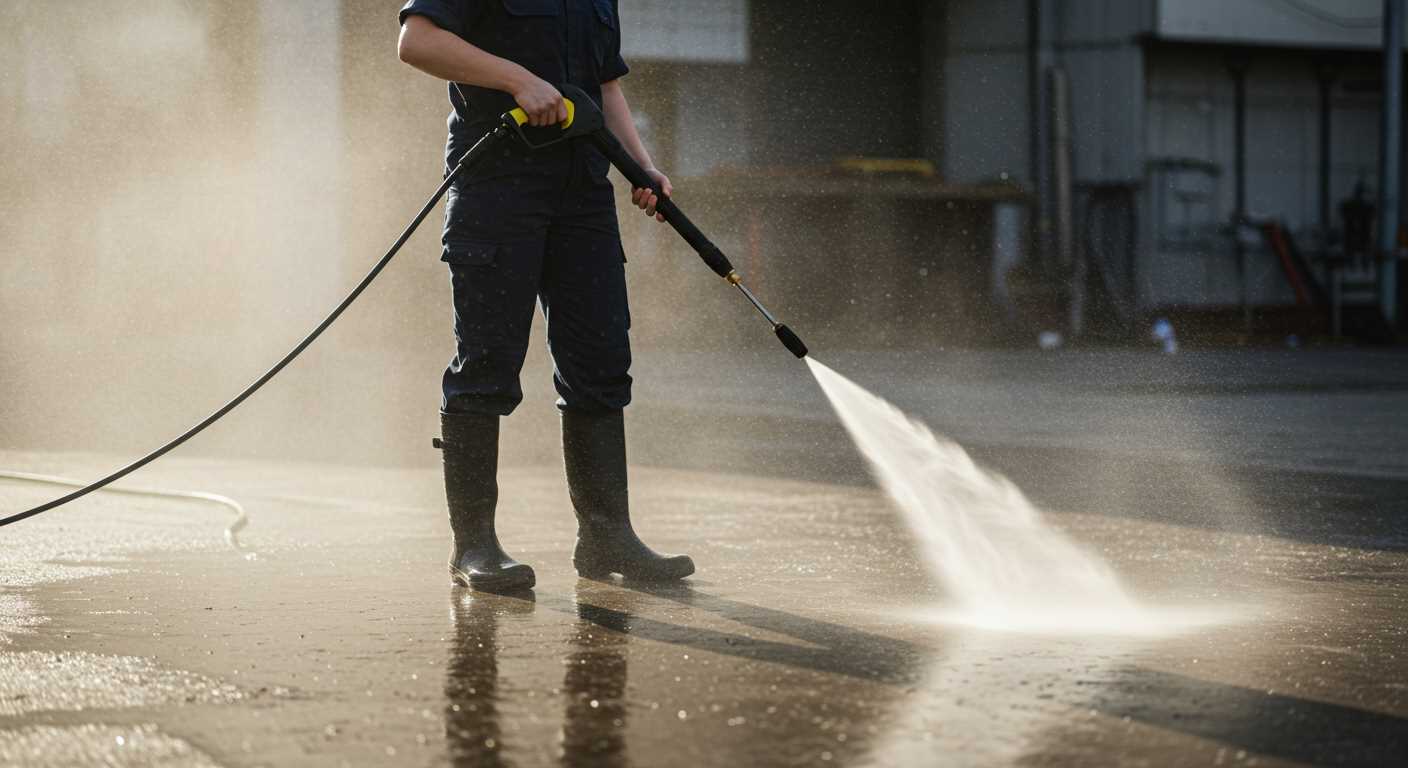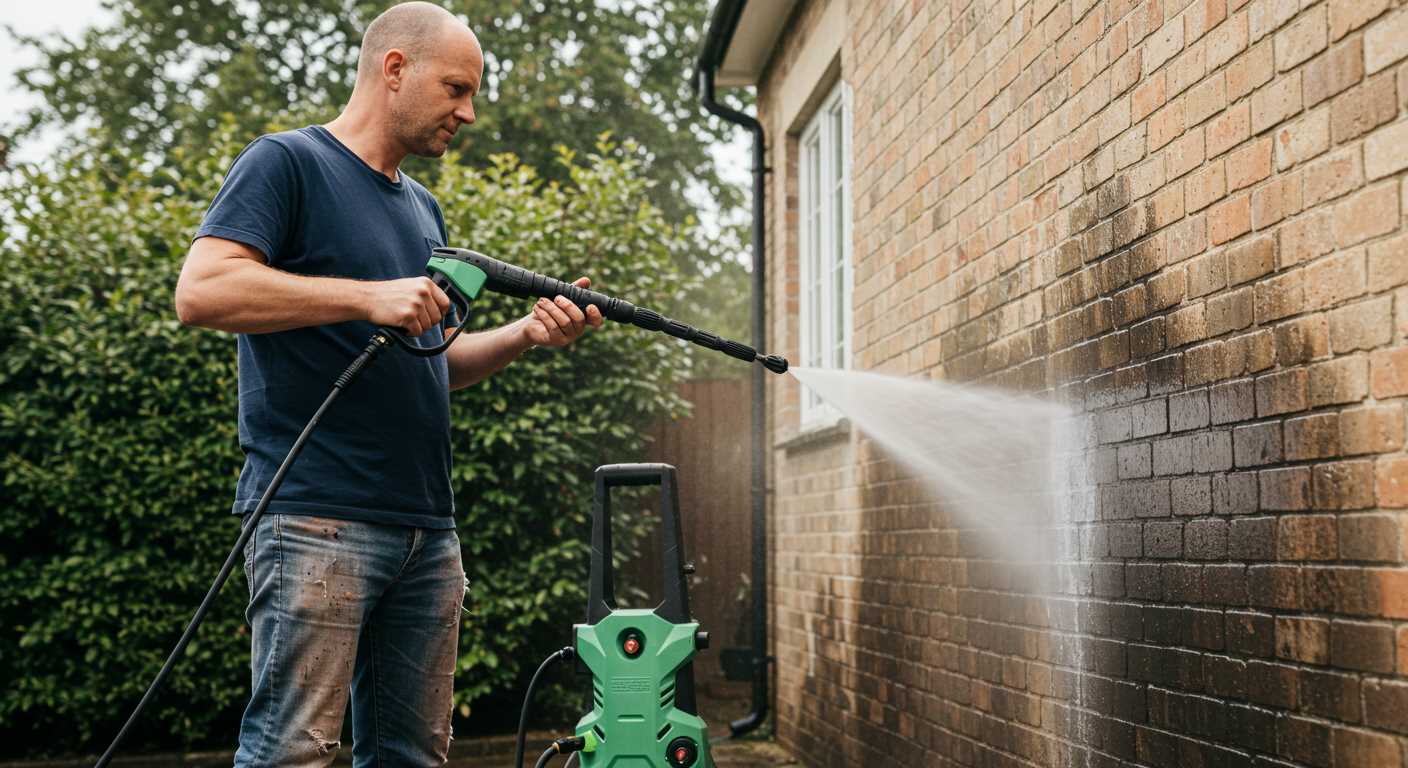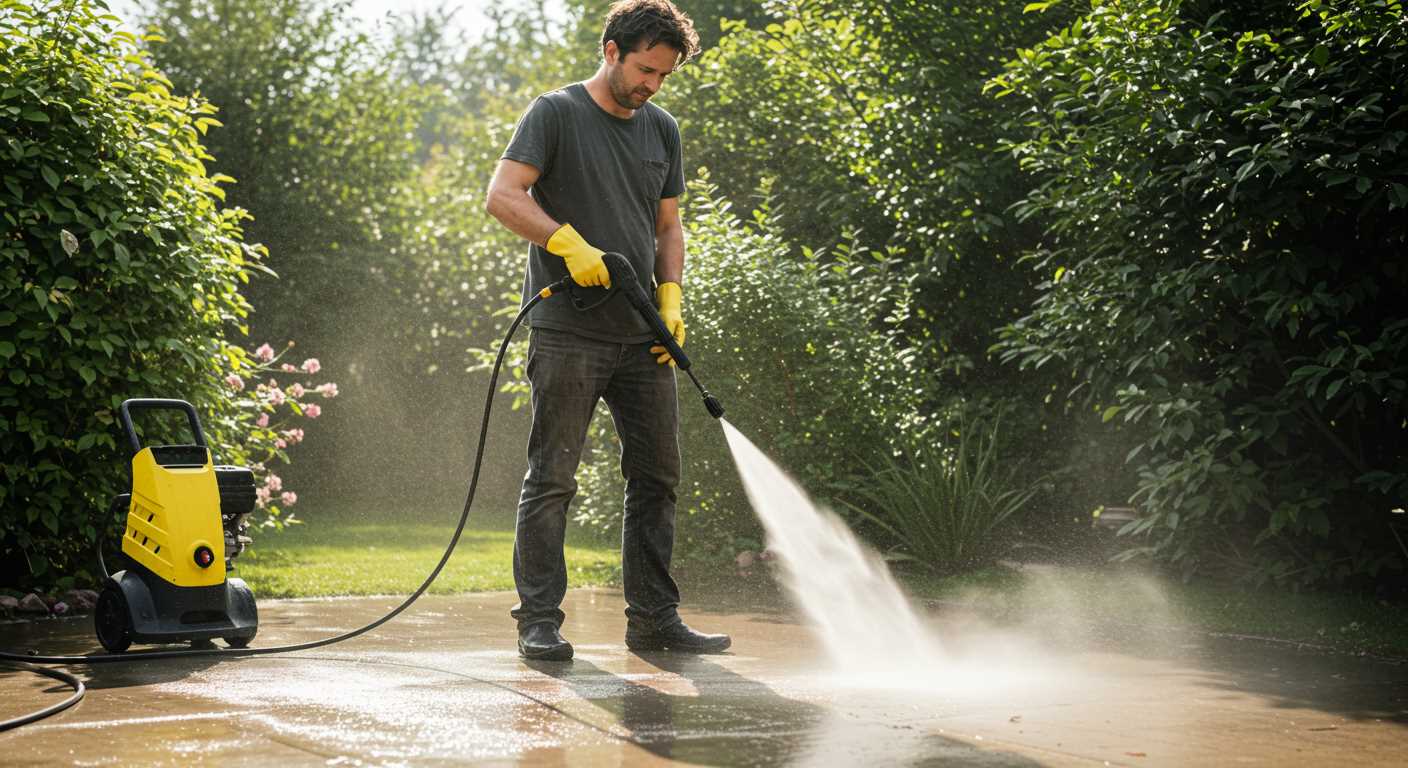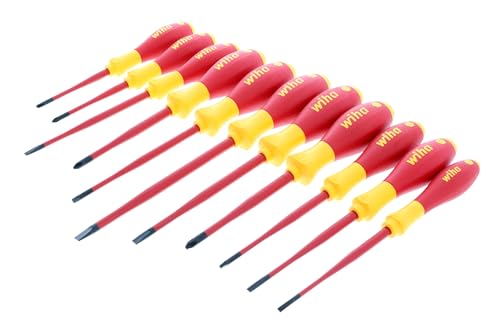



Ensure you use a reliable ramp to facilitate loading the unit into your vehicle. A sturdy ramp prevents accidents and makes the task a breeze. Position the ramp firmly against the back of your transport. Keep an eye on the incline; a gentle slope reduces strain on both you and the machine.
Secure the device effectively once it’s inside. Employ high-quality tie-down straps or bungee cords to guard against movement while driving. Attach the straps to appropriate anchor points within your van. Regularly check that everything is secured before setting off, as the last thing you want is for the equipment to shift during transit.
Keep the water supply and hoses organized and away from the machinery to prevent damage. Store them in designated compartments if available. This prevents tangling and ensures easy access when you reach your destination. Lastly, consider placing protective padding on surfaces that may come into contact with your gear. This adds an extra layer of security and extends the lifespan of your equipment.
Measuring Dimensions Accurately

Begin by taking note of the key dimensions of your cleaning device. These include height, width, length, and weight. Accurately measuring these parameters ensures a perfect fit in your transport vehicle.
Tools Needed

- Tape measure
- Pen and paper for recording measurements
- Scale for weight
Steps for Accurate Measurements

- Place the equipment on a flat surface to eliminate any discrepancies.
- Measure the height from the base to the highest point. Ensure to keep the tape straight for a correct reading.
- For width, measure the widest part at the base. If there are attachments, include these in your measurement.
- Length is measured from the furthest point on one side to the furthest on the other, incorporating any hoses or accessories.
- Weigh the device on a calibrated scale to know its overall mass.
Jot down all measurements systematically to avoid confusion later. Double-check each dimension by measuring twice. This method guarantees you won’t miss nuances that could affect the fit.
Finally, consider the layout of your transporter. Assess where the equipment will be placed to ensure that additional space for accessories doesn’t compromise stability during transit.
Selecting the Right Van Size for Transport
Choosing the appropriate vehicle size is paramount for transporting cleaning equipment securely and efficiently. Consider the following dimensions of your gear and the configurations available in various vehicles.
The width, height, and length should be assessed against the interior dimensions of potential vans. It’s advisable to opt for a vehicle that offers at least 12 inches of additional space on either side and overhead for ease of loading and unloading. This buffer protects both the equipment and the vehicle from damages during transit.
| Dimension Type | Recommended Minimum Space |
|---|---|
| Width | 12 inches beyond the equipment width |
| Height | 12 inches above the equipment height |
| Length | 12 inches beyond the equipment length |
For weight considerations, ensure that the van’s maximum payload capacity is well above the combined weight of your cleaning gear and any necessary accessories to avoid exceeding weight limits.
Available options typically range from compact vans to larger models. Compact versions may suffice for minimal equipment, while medium to full-size vans provide ample space for more extensive setups and additional gear. A medium-sized vehicle is often a balanced choice, incorporating sufficient capacity without excessive dimensions.
Ultimately, choosing accurately sized transportation enhances both safety and efficiency, leading to a smoother operation while avoiding potential mishaps during transit. Assess specific models based on interior dimensions and payload capabilities, which will ensure you select an optimal fit for your cleaning tools.
Preparing the Van for Loading the Cleaning Equipment
Clear the interior space of the vehicle prior to loading. Ensure no items obstruct the area where the equipment will be placed. This prevents damage during transport.
Consider using protective coverings to shield the floor and side panels from scratches or spills. Non-slip mats can be beneficial for stability while driving.
Check the weight capacity of your vehicle to confirm it can handle the additional load without compromising safety. Distribute weight evenly for balance, reducing strain on the suspension.
Invest in securing mechanisms such as straps or anchors. These ensure the unit remains stationary during transit. Regularly inspect these devices for wear and tear.
- Remove unnecessary items from the back, including tools or equipment not required for the trip.
- Confirm the fuel tank is adequately filled to prevent unplanned stops.
- Ensure the doors and windows close securely to avoid any accidental openings while driving.
Keep a first-aid kit nearby, along with any tools required for immediate repairs if issues arise. This can save time and ensure safety on the road.
Finally, take time to practice lifting the unit in and out of the vehicle. This builds confidence and helps minimise the risk of injury during the actual loading process.
Using Ramps for Easy Loading of Heavy Equipment
To streamline the task of loading bulky gear, investing in high-quality ramps is indispensable. Select ramps that can bear the weight of your equipment while ensuring stability and safety during the process. Look for models constructed from robust materials such as aluminium or steel, as these provide the necessary strength without excessive weight.
Choosing the Right Ramps
Opt for adjustable ramps to accommodate varying heights. This feature allows for a level loading surface, reducing the risk of slips or drops. Ensure the ramps you consider have a non-slip surface for better grip during loading. Additionally, look for ramps with a weight capacity that exceeds that of the gear to ensure durability.
Loading Techniques

When utilising ramps, always position them securely against the rear of the vehicle. It’s wise to use chocks to prevent movement during loading. If you’re working alone, consider using a winch or a dolly to assist in moving your equipment up the ramp smoothly. Make sure to maintain a steady pace to avoid sudden jolts that could lead to accidents or damage.
Regularly inspect your ramps for any signs of wear or damage, as this can compromise safety. With the right equipment and technique, loading your gear becomes a manageable task, allowing for efficient transport while minimising the risk of injury.
Securing the Cleaning Equipment During Transit

To prevent movement and damage while transporting your cleaning equipment, secure it using heavy-duty straps. Look for ratchet straps designed for loads like this; they provide a snug hold during transit. Position the unit on a flat surface in the vehicle and use at least two straps–one across the front and another across the rear. Make sure the straps are tight and hold the machine firmly in place.
Using Blocks for Added Stability
Consider using wooden or rubber blocks around the wheels of the equipment. These blocks act as chocks, preventing rolling or shifting while the vehicle is in motion. Place the chocks in front and behind the wheels for maximum stability.
Protecting from Impacts
Wrap the machine in moving blankets or foam padding, especially around vulnerable areas like the handle and pump. This extra layer of protection absorbs shocks from bumps and rough roads, minimising the risk of damage. Secure the padding with additional straps or tape to ensure it stays in position.
Unloading the Pressure Cleaner Safely from the Van
Begin by ensuring a clear path for unloading the equipment; remove any obstacles that could lead to accidents. Next, position the vehicle on a level surface to prevent rolling. Utilize a spotter if possible; having someone to assist can significantly enhance safety during this process.
It’s advisable to use a sturdy ramp designed for the weight of the apparatus. Attach the ramp securely to the rear of the vehicle; ensure it rests firmly on the ground to prevent any slips. Test the stability of the ramp before commencing. If the machine is particularly heavy or cumbersome, consider using a dolly or hand truck to facilitate movement.
When ready, carefully tilt the cleaner at an angle to guide it down the ramp. Maintain a firm grip on the handles while keeping your back straight and using your legs to lift. This method reduces strain on your back and helps maintain control over the equipment as it descends the ramp.
Once on the ground, gently roll the unit away from the vehicle to a safe area. Inspect the machine for any damage that may have occurred during transit. Proper handling at this stage ensures the longevity of your equipment.
FAQ:
What steps should I follow to safely load a pressure washer into my van?
When loading a pressure washer into your van, first ensure that the van is parked on a flat surface and the engine is turned off. Begin by securing the pressure washer with a strong handle or frame support. It may be helpful to use a ramp if the pressure washer is heavy. Position the washer so that it is stable and will not move during transit. Finally, use straps or tie-downs to secure it in place to prevent any movement while you drive.
Are there any specific tools I need for loading and securing a pressure washer in a van?
To load a pressure washer into your van, you may need a few simple tools. A ramp can be useful for easy loading, especially for heavier models. Straps or tie-downs are important for securing the washer once it is loaded. A dolly or hand trolley can also assist in safely moving the pressure washer without straining your back. Ensure that any tools you use are in good condition to avoid accidents during the loading process.
What are common mistakes to avoid when loading a pressure washer into a van?
One common mistake is not properly securing the pressure washer, which can result in damage during transport. It is also important to avoid overloading the van, as this can affect handling and power. Ensure you lift the pressure washer correctly to avoid injury; use your legs and not your back. Additionally, be mindful of how the pressure washer is positioned; it should be placed in a manner that prevents it from tipping or rolling during the ride.








